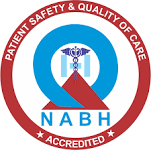The human eye is one of the most important vital sense organs of the body. The front part of the eye contains a glass like structure called the cornea that allows light to enter the eye and get focused on the light sensitive layer of the eye i.e. the retina. Any factor that affects the health of the cornea leads to degradation of its clarity and thereby directly affects the quality of vision.
The health of the ocular surface is maintained by the tear film, normal functioning eyelids, and healthy population of corneal stem cells. The tear glands continuously produce a watery secretion that moistens and lubricates the ocular surface, allowing smooth movement of the eyelids and the eyeball. The tear film also washes away any debris that accumulates on the surface of the eye, and provides a smooth refracting surface of the cornea.
Any deficiency of a stable tear film, directly affects the quality of vision, besides producing a variety of symptoms. These range from dryness, burning sensation, irritation, foreign body sensation, itching, and redness etc. I am sure as you read this section, you will recall experiencing some of these symptoms in the past. Well with the advent of 24 hours television channels, and usage of computers in day to day work, dry eye syndrome has become quite common, and is often referred to as "Computer Vision Syndrome"
While watching television or working long hours on computer, people tend to blink less frequently. This leads to drying of the ocular surface in between blinks, making the surface rough, with resultant symptoms of irritation and burning etc. Moreover sitting in an air conditioned environment leads to faster evaporation and drying of the eyes. Hence it is important to realize this and consciously blink more frequently, or take a break after an hour, and keep the eyes closed to allow the surface to recover.
Dry eye condition, also leads to poor lid hygiene, due to which there may be recurrent episodes of lid margin infections, painful boils in the eye lids. These often tend to recur if the dry eye condition is not properly treated.

